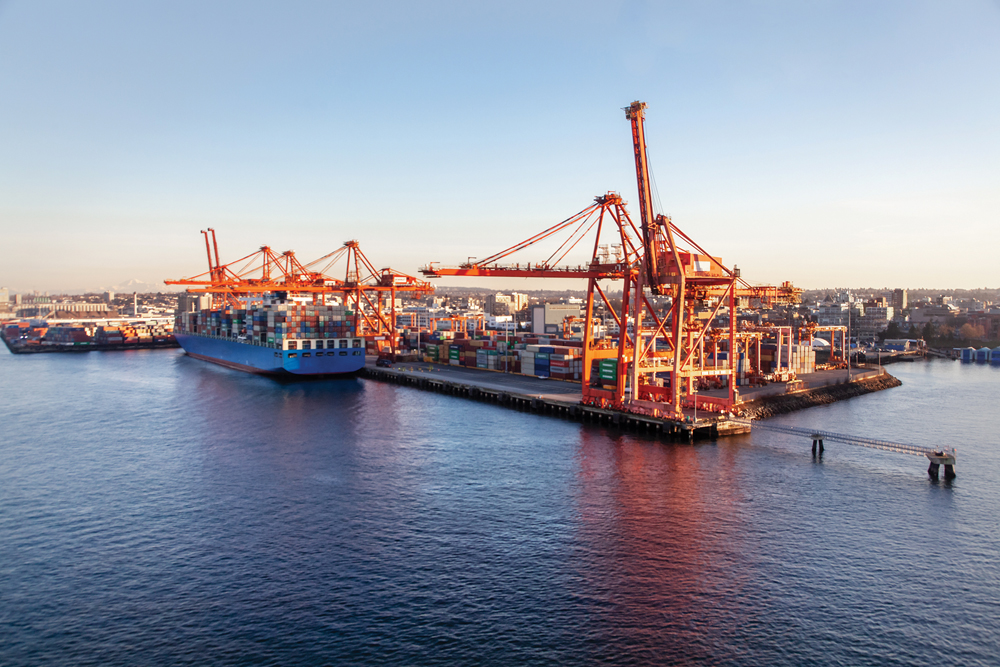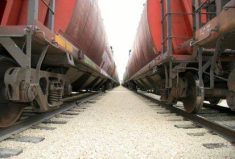Grain shipments are moving better than they were this time last year, but that’s not saying much.
“Last year was awful,” Western Grain Elevator Association (WGEA) executive director Wade Sobkowich said. “We had some major deficiencies in rail service between January and March of 2022.”
Indeed, things were so bad in the winter of 2022 that the WGEA asked Transport Canada to investigate it.
Read Also

Manitoba to boost rural medical responders
Manitoba bursary aims for more accessible emergency medical responder training, better rural emergency health care.
“There’s no talk of that this year,” Sobkowich said.
Why it matters: Conditions have been good for moving grain, but volumes going down the track don’t reflect that.
The latest data from the Ag Transport Coalition comes from Jan. 15-22 (week 25 of the harvest year) and doesn’t include the latest cold snap on the Prairies. Those numbers are within the expected range, but Sobkowich noted that what is expected and what they consider acceptable are two different things. “We’re looking at CP providing 3,554 cars that week, compared to the 4,350 cars that they promised,” he said.
That works out to roughly 82 per cent of the promised cars from Jan. 15-22.
There is an apples-to-oranges issue when comparing CN numbers with CP. CN includes private car fleets in their grain plan, while the Ag Transport Coalition only tracks the railway’s own fleet. Because of that, the WGEA looks at demand met in a week rather than CN’s grain plan promises. In terms of demand, CN provided 2,956 cars out of a demand of 3,808 cars, or 78 per cent.
[RELATED] Shipping containers could open new doors to international grain trade
The WGEA considers it a pervasive problem when numbers begin to fall below 85 per cent.
While the cold snap isn’t showing up in the data yet, Sobkowich says a drop in service is almost inevitable. “We’ve grown accustomed to it, but we think that the dropping of capacity in the winter is a systemic issue,” he said. “Cold weather happens every year, so we really need to get beyond this problem.”
Canada’s grain monitor shares Sobkowich’s lukewarm assessment of the railways’ grain shipping performance this year
Mark Hemmes, president of Quorum Corporation — the group responsible for keeping tabs on Canada’s grain transportation system — described numbers as only “okay.”
In a year without many unexpected disruptions, there is mild disappointment that it’s not better.
“We haven’t had any floods. We haven’t had any really bad weather and there have been no blockades of the railway,” Hemmes said. “We couldn’t ask for better conditions for moving grain.”
There have been strong downloads on the west coast, he noted, while Thunder Bay was less impressive.
Hemmes says his current concern is a western bottleneck of vessels, although there have been worse clogs in the past. Thirty vessels were backed up at Vancouver as of the end of January, he said, more than the 21 or 22 that would be the normal preferred limit, but less than some years, when February started with 40 or 45 vessels paused.
This backlog “largely came about because there was a period back in November where the railways weren’t really moving the volumes that everybody would have hoped for…there were a few days where it was up as high as 37 vessels in Vancouver,” he said.
Loading vessels in the rain, and the resulting risk of spoilage, also gets lots of press attention, although Hemmes says it doesn’t have a huge effect on loading rail cars.
“What we found is that the impact of rain in Vancouver has very little impact on the unloading of rail cars because there is sufficient storage capacity in all the terminals,” he says.
“The railways seem to want to make a bigger issue of it than it really is, and I find that frustrating,” he added, noting that cold on the Prairies ripples out onto the entire supply chain and is, “100 times worse.”
Slow to change
Both Sobkowich and Hemmes also expressed disappointment in the lack of movement since the National Supply Chain Task Force released its report last October. The report drew on recommendations and industry consultation to develop strategies to avert a supply chain crisis.
In November, the federal government introduced Bill C-33, called the Strengthening the Ports System and Railway Safety in Canada Act. The Act aimed to improve safety and efficiency in port and railway systems, but Sobkowich says they put the cart before the horse when drawing up the legislation.
“There’s an order of operations here that seems backwards,” he said. “They focused more on the marine side—on port governance, anchorage management and things like that.”
That, he said, is not what really ails the Canadian supply chain.
“If you want to manage vessels, you really need to get at root causes,” he said. “The reason why vessels stay in port longer than what we planned for is because the grain isn’t arriving as we planned, and that’s outside of our control.”
“They should be introducing a bill to amend the Canada Transportation Act to address root causes, then look at vessel management, if it’s even needed after you fix the rail service,” Sobkowich said. “They sort of promised that there will be some changes to the transportation act down the road, but you can’t really rely on that.”
















